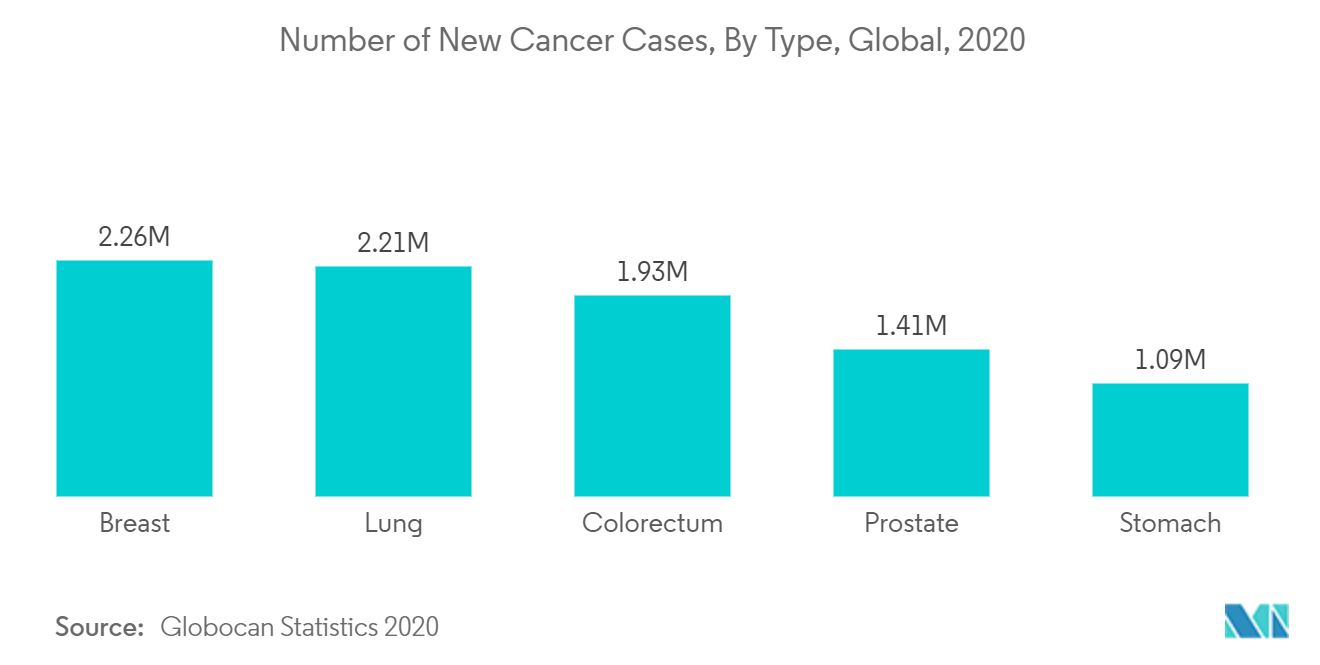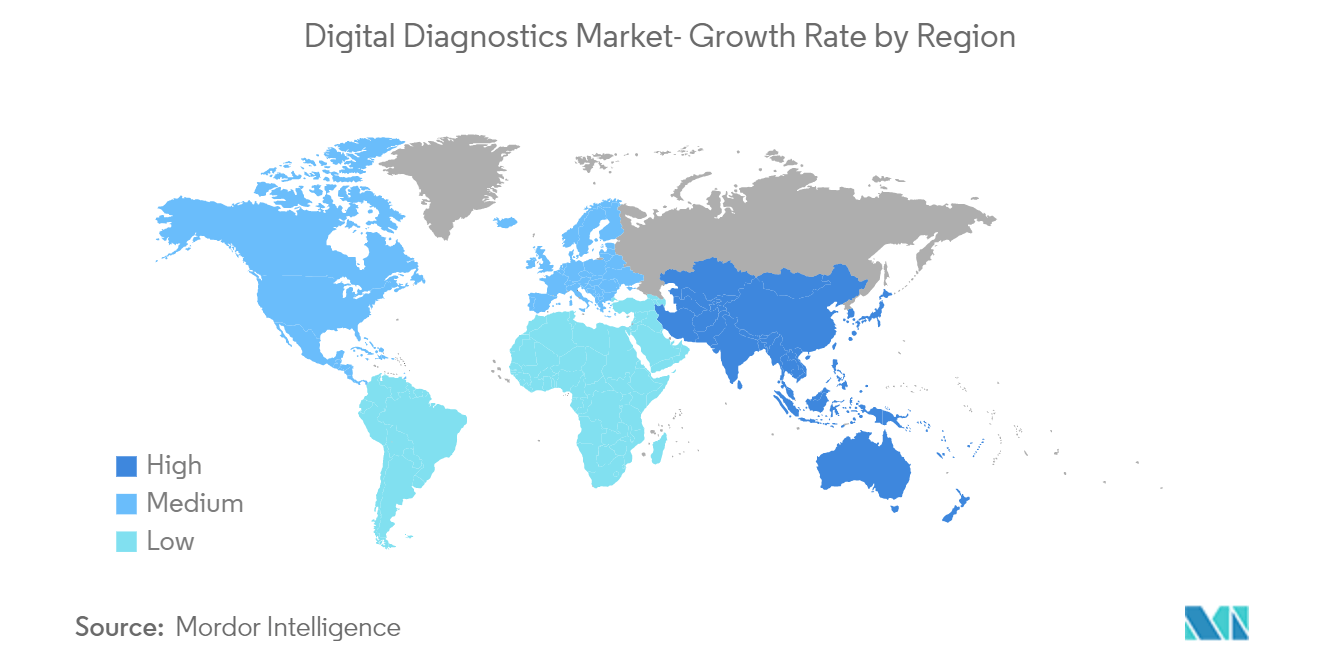Market Trends of Global Digital Diagnostics Industry
Oncology Segment is Expected to Account for the Large Market Share During the Forecast Period
Oncology is a branch of medicine that deals with the prevention, diagnosis, and treatment of cancer. It includes medical oncology (the use of chemotherapy, hormone therapy, and other drugs to treat cancer), radiation oncology (the use of radiation therapy to treat cancer), and surgical oncology (the use of surgery and other procedures to treat cancer).
The factors propelling the oncology segment in the digital diagnostics market are the rising burden of cancer globally, increasing launch of digital diagnostics platforms for cancer screening, technological innovation, and adoption of key strategies by market players.
As per the February 2022 update by World Health Organization, cancer is a leading cause of death worldwide, accounting for nearly 10 million deaths in 2020. The most common cancer reported in 2020 were breast (2.26 million cases); lung (2.21 million cases); colon and rectum (1.93 million cases); prostate (1.41 million cases); skin (non-melanoma) (1.20 million cases); and stomach (1.09 million cases). Due to the high number of cancer cases, there is an increasing demand for early diagnosis, boosting the digital diagnosis of cancer.
Furthermore, the launch of new products and services in the segment will also aid in contributing to the significant growth of the market. For instance, in April 2022, C2i Genomics launched its C2inform, software-as-a-medical-device minimal residual disease (MRD) test, across Europe bringing whole genome cancer detection and monitoring across the region.
Additionally, in November 2021, Hologic launched the Genius Digital Diagnostics system in Europe. It is the next generation of cervical cancer screening that combines deep learning-based artificial intelligence (AI) with advanced volumetric imaging technology to help identify pre-cancerous lesions and cervical cancer cells in women.
Moreover, rising research activities studying the integration of technologies in diagnostic systems, which increases the efficiency of cancer diagnosis, will also drive the market. For instance, in March 2022, Ibex Medical Analytics and Hartford HealthCare initiated a clinical research study involving Ibex's Galen Breast, an AI solution helping physicians deliver high-quality diagnosis and improved care for breast cancer patients. The positive results from the study will readily adopt the technology in cancer diagnosis hence driving the segment.
Thus, due to the above-mentioned factors, the studied segment is expected to contribute to the significant growth of the market.

North America is Expected to Hold a Significant Share in the Market and Expected to do Same in the Forecast Period
The primary driving factors for the growth of the North American digital diagnostics market are the growing burden of chronic diseases, rising adoption of technologies in chronic disease management, increasing investments, rising product launches, and key initiatives taken by the key market players.
The United States within North America is expected to grow significantly during the study period. The rising burden of chronic diseases such as cancer, Alzheimer's disease, and others is expected to boost the digital diagnostics market. For instance, according to the estimates of the 2022 American Cancer Society, Inc., about 236,740 new cases of lung cancer will be diagnosed in the country in 2022. The same source also states that 79,000 new cases of kidney cancer and 13,920 deaths will be reported in 2022 from Kidney cancer. The high burden of cancer is expected to boost the demand for digital diagnostics devices, thereby driving the market growth.
The launch of products and services in the region will also drive the market significantly. For instance, in March 2022, Digital Diagnostics and Baxter International Inc. announced a long-term strategic partnership to help front-line care providers deliver high-quality care and improve care outcomes by offering Digital Diagnostics' IDx-DR autonomous AI software as a diagnostic service combined with the Welch Allyn RetinaVue 700 Imager. This combination can give providers a clear view of diagnostic information valuable for a treatment plan, thus driving the market.
Moreover, strategies such as rising partnerships, expansion, and increasing investments by major players in the market will also boost innovation in the region, thereby boosting the market in the region. For instance, in October 2021, Neuberg Diagnostics expanded its presence in the United States region by launching its first laboratory in the United States. The Neuberg Centre for Genomic Medicine (NCGM) will focus on genomic and molecular testing based on next-generation sequencing (NGS) techniques through digital pathology systems.
Therefore, due to the above-mentioned factors, the studied market is expected to lead to lucrative growth of the market in North America.


